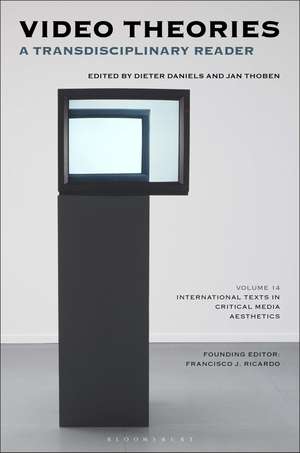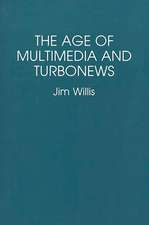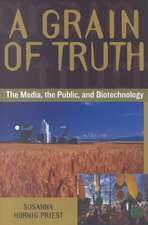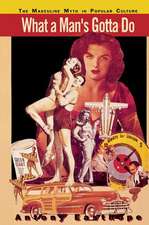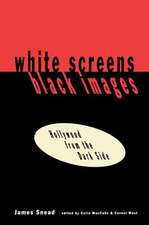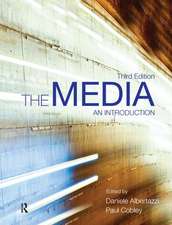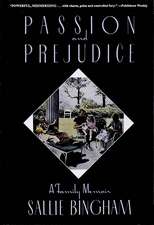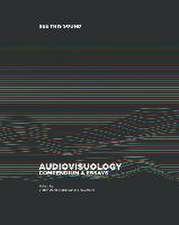Video Theories: A Transdisciplinary Reader: International Texts in Critical Media Aesthetics
Editat de Dieter Daniels, Jan Thobenen Limba Engleză Paperback – 23 feb 2022
| Toate formatele și edițiile | Preț | Express |
|---|---|---|
| Paperback (1) | 210.22 lei 3-5 săpt. | |
| Bloomsbury Publishing – 23 feb 2022 | 210.22 lei 3-5 săpt. | |
| Hardback (1) | 607.17 lei 6-8 săpt. | +132.91 lei 7-13 zile |
| Bloomsbury Publishing – 23 feb 2022 | 607.17 lei 6-8 săpt. | +132.91 lei 7-13 zile |
Preț: 210.22 lei
Preț vechi: 264.57 lei
-21% Nou
Puncte Express: 315
Preț estimativ în valută:
40.23€ • 42.30$ • 33.24£
40.23€ • 42.30$ • 33.24£
Carte disponibilă
Livrare economică 26 martie-09 aprilie
Preluare comenzi: 021 569.72.76
Specificații
ISBN-13: 9781501354083
ISBN-10: 1501354086
Pagini: 600
Ilustrații: 45 bw illus
Dimensiuni: 156 x 235 mm
Greutate: 0.98 kg
Editura: Bloomsbury Publishing
Colecția Bloomsbury Academic
Seria International Texts in Critical Media Aesthetics
Locul publicării:New York, United States
ISBN-10: 1501354086
Pagini: 600
Ilustrații: 45 bw illus
Dimensiuni: 156 x 235 mm
Greutate: 0.98 kg
Editura: Bloomsbury Publishing
Colecția Bloomsbury Academic
Seria International Texts in Critical Media Aesthetics
Locul publicării:New York, United States
Caracteristici
Includes a timeline representing fifty years of video media formats and usages to help contextualize and frame the techno-cultural developments of video since the analog days
Notă biografică
Dieter Daniels is Professor in Media Theory and Art History at the Academy of Visual Arts, Leipzig, Germany.Jan Thoben is Lecturer and Program Coordinator in Sound Studies and Sonic Arts at the University of the Arts Berlin, Germany.
Cuprins
AcknowledgmentsPrefaceDieter Daniels and Jan Thoben I Foundations 1 Formations | Exemplary DiscoursesIntroduction Dieter Daniels Draft for Gutenberg Video (1960). FacsimileMarshall McLuhan Biennale Seminar on Video, Venice 1977Marshall McLuhan Videotape: Thinking about a Medium (1968)Paul Ryan Gestures on Videotapes (1973)Vilém Flusser Video (1973-1974)Vilém Flusser 2 Medium Specificity and Hybridity: The Materiality of the Electronic ImageIntroductionJan Thoben Video: From Technology to Medium (2006)Yvonne Spielmann Surrealism without the Unconscious (1991)Fredric Jameson Between-the-Images (1990)Raymond Bellour Video as Dispositif (1988)Anne-Marie Duguet Video Media (1993)Sean Cubitt Is There a Specific Videocity? (2002)Wolfgang Ernst Video Intimus (2010)Siegfried Zielinski Toward an Autobiography of Video (2016)Ina Blom Video, Flows, and Real Time (1996)Maurizio Lazzarato 3 Video and the Self: Closed Circuit | Feedback | NarcissismIntroduction Peter Sachs Collopy (guest editor) Some Aspects of the Significance to Psychoanalysis of the Exposure of a Patient to the Televised Audiovisual Reproduction of His Activities (1969)Lawrence S. Kubie Self-Processing (1970)Paul Ryan Two Consciousness Projection(s) (1972)Dan Graham Essay on Video, Architecture, and Television (1979)Dan Graham Video: The Aesthetics of Narcissism (1976)Rosalind Krauss Video Art, the Imaginary and the Parole Vide (1976)Stuart Marshall Vital Statistics of a Citizen, Simply Obtained (1977)Martha RoslerNarcissism, Feminism, and Video Art: Some Solutions to a Problem in Representation (1981)Micki McGee Discover European Video: For a Catalogue of an Exhibition (1990)Vilém Flusser Prismatic Media, Transnational Circuits (2012)Krista Geneviève Lynes Screen Births: Trans Vlogs as a Transformative Media for Self-Representation (2016)Tobias Raun II Relations 4 Video | Film IntroductionMarc Ries Filmgoing/Videogoing: Making Distinctions (1973)Douglas Davis Video in the Work of Jean-Luc Godard: Interviews and Statements (1969-2001)Jean-Luc Godard (compiled and introduced by Thomas Helbig) The Withering Away of the State of the Art (1977)Hollis Frampton Video and Film (1987) Gábor Bódy On Video (1988)Roy Armes Video: The Access Medium (1996) Tetsuo Kogawa Interface (1995)Harun Farocki Penultimate Pictures (2018)Marc Ries 5 Video | TelevisionIntroductionDieter Daniels The Politics of Timeshifting (2011) Dylan Mulvin Global Groove and Video Common Market (1970) Nam June Paik Television: Video's Frightful Parent (1975) David Antin Talking Back to the Media (1985)Dara Birnbaum [Portable Video] (1995)John Thornton Caldwell [The Videographic] (2002) John Ellis 6 Video | Sound and SynthesisIntroductionJan Thoben The Sound of One Line Scanning (1986/1990) Bill Viola AFTERLUDE to the Exposition of EXPERIMENTAL TELEVISION (1964). FacsimileNam June Paik Versatile Color TV Synthesizer (1969)Nam June Paik Video-Synthesizer (1969). FacsimileNam June Paik Soundings (1979)Gary Hill Light and Darkness in the Electronic Landscape (1978) Barbara Buckner 7 Video | Performance and TheaterIntroductionBarbara Büscher (guest editor) Transmission (1998)Joan Jonas Moving Target: General Intentions (1996)Diller + Scofidio Studio Azzurro: Re-Inventing the Medium of Theater (2012)Valentina Valentini Intermedial Interplay between Real-time Videos, Film, and Theatrical Scenes: Bert Neumann's Spaces for Frank Castorf's Dostoevsky project Erniedrigte und Beleidigte (2014)Birgit Wiens Multiplication. The Wooster Group (2007)Nick Kaye 8 Video | Internet: Online Video and the Consumer as ProducerIntroductionMartha Buskirk (guest editor) Do It 2 (2009)Cory Arcangel and Dara Birnbaum In Defense of the Poor Image (2009) Hito Steyerl Shiny Things So Bright (2017)Andreas Treske YouTube and the Syrian Revolution: On the Impact of Video Recording on Social Protests (2017)Cécile Boëx Nothing Is Unwatchable for All (2019)Alexandra Juhasz The Dangers of Ubiquitous Video (2020)Siva Vaidhyanathan III Repercussions 9 Sociality | Participation | UtopiasIntroduction Dieter Daniels Videotopia (1972)Alfred Willener, Guy Milliard, Alex Ganty Guerrilla Television (1971)Michael Shamberg Subject to Change: Guerrilla Television Revisited (1985)Deirdre Boyle Women's Video (1981)Anne-Marie Duguet 10 Communities | Amateurism | Ethnographies | ParticipationIntroductionDieter Daniels [Wedding Videos] (1993)Sean Cubitt [Bootlegging Video] (2009) Lucas Hilderbrand [Splatter Videos, Scene Selection, and the Video Store] (2014)Tobias Haupts Degraded Images, Distorted Sounds: Nigerian Video and the Infrastructure of Piracy (2004)Brian Larkin The Other Within (1989)Juan Downey Defiant Images: The Kayapo Appropriation of Video (1992)Terence Turner Decolonizing the Technologies of Knowledge: Video and Indigenous Epistemology (2003)Freya Schiwy 11 Surveillance | Exposure | Testimony | Forensics IntroductionDieter Daniels Photographesomenon: Video Surveillance as a Paradoxical Image-Making Machine (2005)Winfried Pauleit CCTV. The Stealthy Emergence of a Fifth Utility? (2002)Stephen Graham The Cultural Labor of Surveillance. Video Forensics, Computational Objectivity, and the Production of Visual Evidence (2013)Kelly Gates Drone Warfare at the Threshold of Detectability (2015)Eyal Weizman Webcams, or Democratizing Publicity (2006)Wendy Hui Kyong Chun "The Woman in the Blue Bra": Follow the Video (2015/2017)Kathrin Peters IV Dialogues 12 Artistic Practice and Video Theory Introduction Dieter Daniels and Jan Thoben Video 1965: Andy Warhol and Nam June Paik. A Specific Moment of Unspecificity (2018/2021)Dieter Daniels Pop Goes the Videotape (1965)Andy Warhol Electronic Video Recorder (1965). FacsimileNam June Paik Before the Cinematic Turn: Video Projection in the 1970s (2015)Erika Balsom Video as a Function of Reality (1974) Peter Campus Videor (1990)Jacques Derrida [Processual Video] (1980)Gary Hill Compulsive Categorizations: Gender and Heritage in Video Art (2015) Malin Hedlin Hayden Video as a Medium of Emancipation (1982) Ulrike Rosenbach Video in the Time of a Double, Political and Technological, Transition in the Former Eastern European Context (2009/2020)Marina Grzinic [Video Direction Theory] (1989)Boris Yukhananov (edited and annotated by Andreas Schmiedecker) Index
Recenzii
The book by Daniels and Thoben is a game-changer both for Media Studies and for Art History, making available an important body of texts which have so far been either unknown, or inaccessible. The editors' knowledgeable selection and their intellectually rich proposal for ordering the historical discourses about the medium of video should raise objections and debate, but what will prevail is the phenomenal achievement of this publication that makes such debate possible in the first place. An essential source for anybody interested in visual media.
This book is a long overdue must-read primer for anyone thinking about and teaching the many meanings and epistemes of video. Read this book and you will find a compellingly structured overview of video theories and histories covering a wide range of discursive fields.
This exiting and much-needed volume brings together an impressive array of voices on video. Its interdisciplinary, transhistorical, and intercultural scope offers a comprehensive, in-depth understanding of the discursive field of video theories-a field that is as multifaceted and everchanging as the medium of video itself. The most laudable accomplishment of the book is that it celebrates the "hydra-headedness" of video without falling prey to it: the volume doesn't lose sight of the main (t)h(r)eads of the medium, nor does it attempt to silence any perspectives on video at the benefit of a singular canonical viewpoint. Instead, by structuring the volume around themes and by providing insightful introductions to each chapter, the volume manages to interconnect not only a multitude of heterogenous video theories, but also to critically relate artistic practices to written reflections, as well as the past, present and future of video.
This book is a long overdue must-read primer for anyone thinking about and teaching the many meanings and epistemes of video. Read this book and you will find a compellingly structured overview of video theories and histories covering a wide range of discursive fields.
This exiting and much-needed volume brings together an impressive array of voices on video. Its interdisciplinary, transhistorical, and intercultural scope offers a comprehensive, in-depth understanding of the discursive field of video theories-a field that is as multifaceted and everchanging as the medium of video itself. The most laudable accomplishment of the book is that it celebrates the "hydra-headedness" of video without falling prey to it: the volume doesn't lose sight of the main (t)h(r)eads of the medium, nor does it attempt to silence any perspectives on video at the benefit of a singular canonical viewpoint. Instead, by structuring the volume around themes and by providing insightful introductions to each chapter, the volume manages to interconnect not only a multitude of heterogenous video theories, but also to critically relate artistic practices to written reflections, as well as the past, present and future of video.
